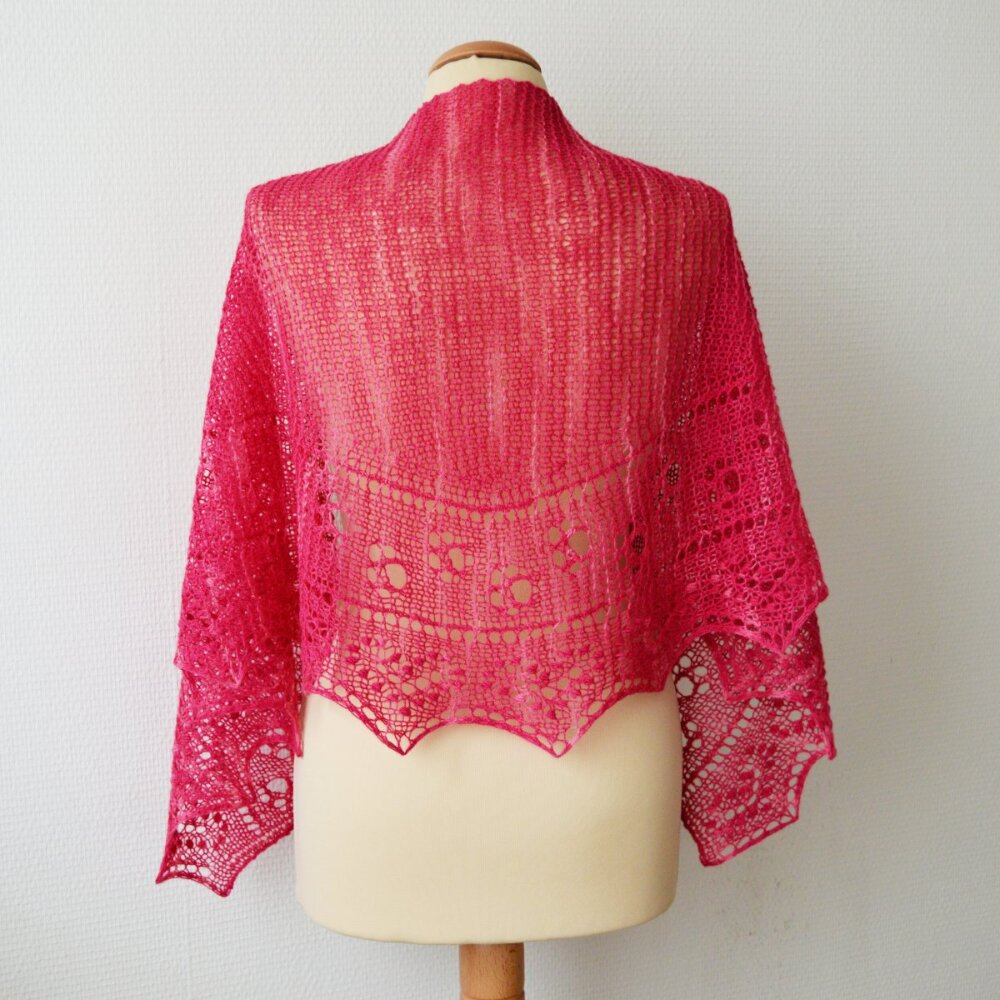Contains:
- Written and charted pattern
- Instructions in English
- US Imperial and metric measurements
- Suitable for the intermediate to advanced knitter
- Links to tutorials by the designer for techniques used
- Gauge: 14 sts / 25 rows = 10 cm (4 inches) over garter stitch, measured after blocking. Gauge is, however, not critical in this design.
Materials you need at home:
- Yarn: 400 m (437 yds) / 100 g The Dutch Yarn Barn Double Dutch (100% Texel wool; 400 m (437 yds) / 100 g) in Hot Raspberry. Substitute any heavy fingering or sport weight wool yarn for a similar result.
- Size 4.5 mm (US 7) / 80 cm (32 inches) circular needles.
- Yarn needle
- 1 stitch marker to differentiate the body from the edging of the shawl
- Crochet hook in a size equivalent to the size of your knitting needles (optional, for easy nupps)
The Kitty Cat Shawl is a shallow, triangle scarf, knit sideways. It has paw prints and hearts because my daughter loves cats and therefore wanted this in her new shawl. This design features a lace edging that is worked at the same time as the body of the shawlette. Worked at a loose gauge, the Kitty Cat Shawl is a lovely and airy layering piece.
The pattern contains both fully written out as well as charted instructions for the lace. The lace in the border of the shawl is true lace knitting, worked on both wrong and right side rows.
Difficulty level: Stitches used include knit, purl, yo, kfb, skp, k2tog, and nupps. This pattern is suitable for the intermediate to advanced knitter.
Sizes and finished measurements: Finished dimensions of the sample shawl: Span width of 155 cm (61 inches) along the upper edge and a depth of 45 cm (17 ¾ inches), measured after blocking.
Change the size of the shawl by using heavier or lighter weight yarn and/or working less (or more) repeats. This will, of course, change the amount of yarn needed.















